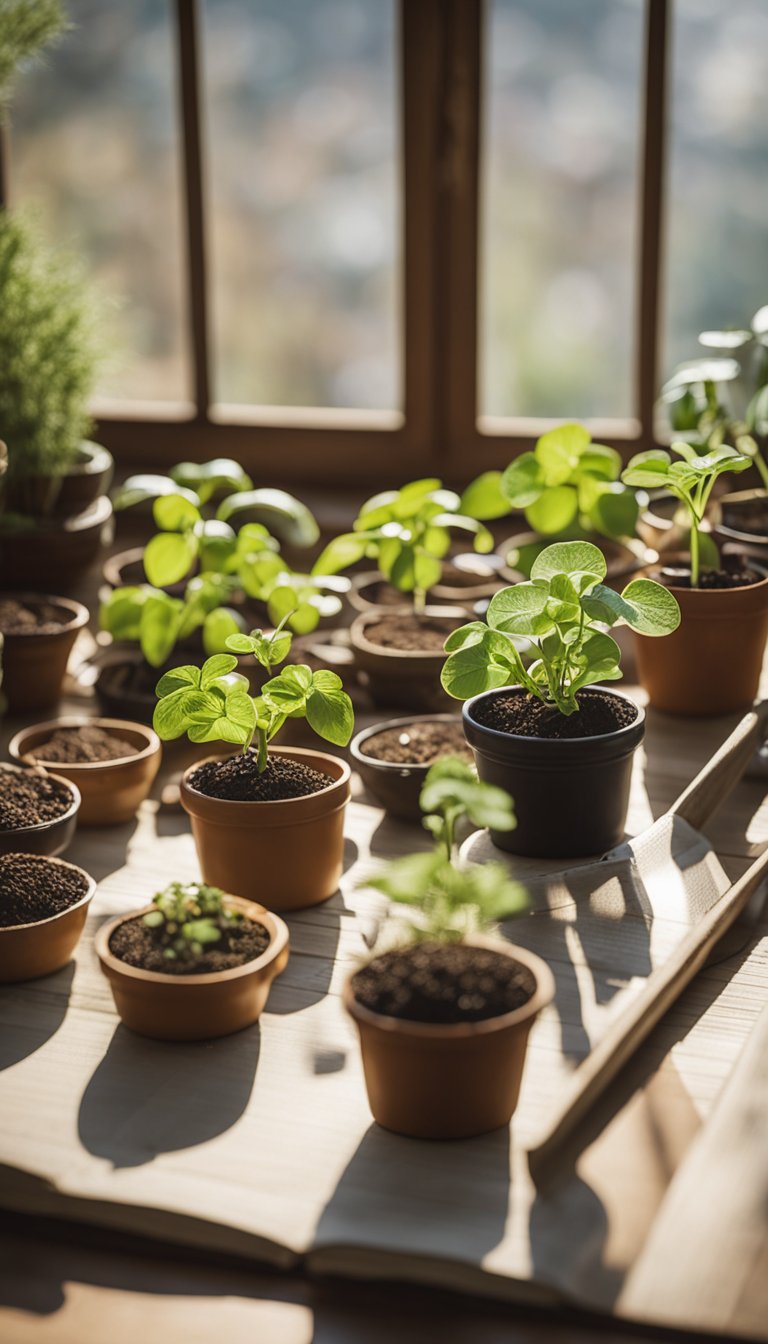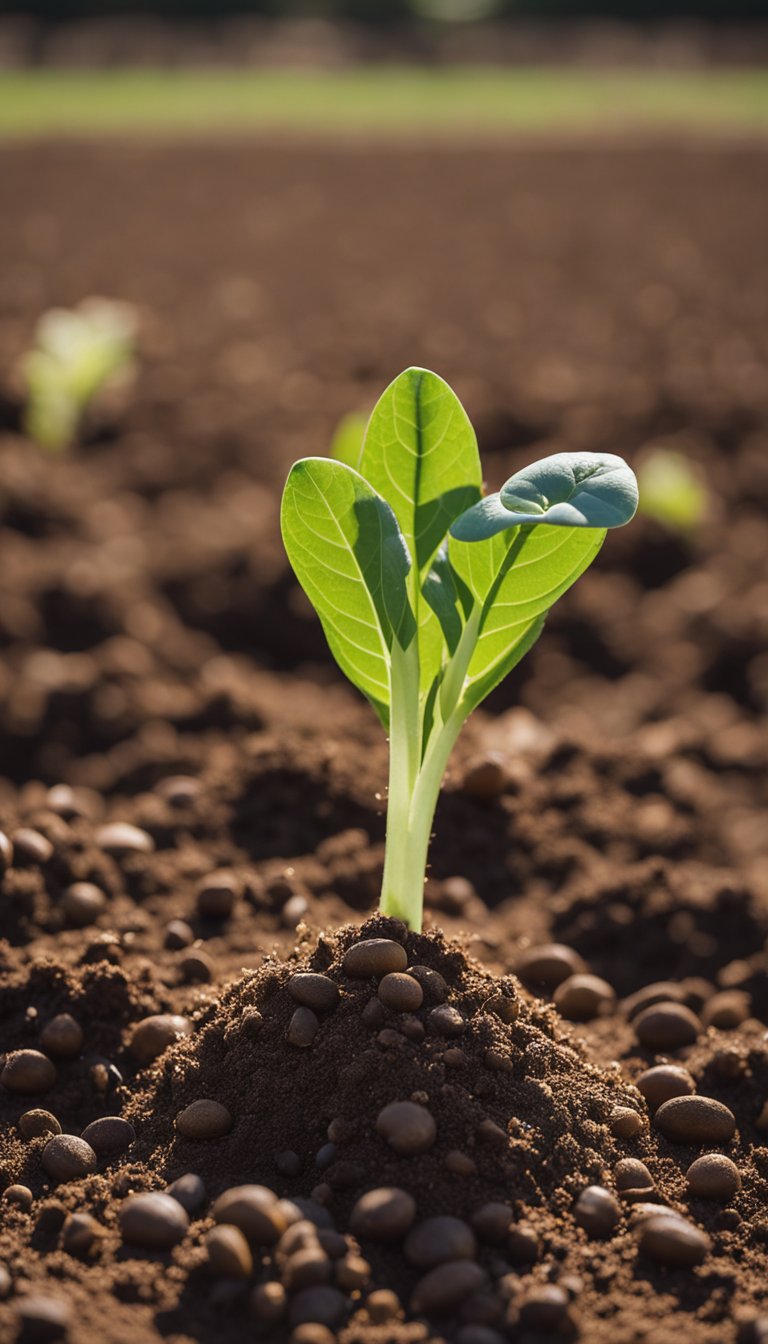As winter comes to an end and spring approaches, gardeners everywhere are itching to get back outside and start planting. March is the perfect time to start planning your garden and getting your hands dirty. But with so many options, it can be overwhelming to decide what to plant in March.
This post may contain affiliate links.
Luckily, there are plenty of options to choose from depending on your climate and personal preferences.
If you live in a warmer climate, you can start planting warm-season vegetables like tomatoes, peppers, and eggplants. If you live in a cooler climate, you can start with cool-season vegetables like lettuce, spinach, and peas.
No matter where you live, March is a great time to start planting flowers like daffodils, tulips, and hyacinths. These colorful blooms will add a pop of color to your garden and help usher in the spring season. So grab your gardening gloves and get ready to start planting!
Related Article: How to Grow Marigolds in Pots: Tips and Tricks for a Blooming Garden
Planning Your March Garden
If you’re looking to start your garden in March, there are a few things you should consider before getting started. Understanding your climate and selecting the right plants are two key factors that will help ensure a successful garden.
Understanding Your Climate
Before you begin planting, it’s important to know your last frost date. This will help you determine when it’s safe to plant certain vegetables and flowers.
In general, cool-season vegetables and hardy annuals can be planted earlier in the season, while warm-season plants should be planted after the last frost date.
In addition to your last frost date, you should also consider your soil. March is a great time to prepare your soil for planting. Make sure it’s well-draining and has plenty of organic matter.
Selecting the Right Plants
When choosing plants for your March garden, consider the climate and your personal preferences. Cool-season vegetables like broccoli, lettuce, and spinach are great options for early planting. Hardy annuals like pansies and violas can also be planted in March for early spring color.
Make sure to choose plants that are appropriate for your climate and soil conditions. If you’re unsure, talk to your local garden center or extension office for advice.

Vegetable Gardening in March
March is the perfect time to start your vegetable garden. Whether you’re starting seeds indoors or direct sowing outdoors, there are plenty of vegetables you can plant this month. Here are some tips and ideas for your March vegetable garden.
Starting Seeds Indoors
Starting seeds indoors is a great way to get a head start on your garden. You can start your seeds in trays or pots and keep them indoors until they’re ready to be transplanted outside.
Some vegetables that are perfect for starting indoors in March include peas, beets, carrots, lettuce, radishes, kale, broccoli, cabbage, spinach, and onions.
Make sure to give your seedlings plenty of light and keep the soil moist. Once they’ve grown to a suitable size, you can transplant them outside. This will give them a head start and help them establish themselves in the garden.
Direct Sowing Outdoors
Direct sowing outdoors is another great option for your March vegetable garden. Some vegetables that are perfect for direct sowing include peas, lettuce, radishes, turnips, and cool season crops like spinach and kale.
Make sure to prepare your soil before planting by removing any weeds and adding compost or fertilizer. Follow the planting instructions on your seed packets and make sure to keep the soil moist until your seeds germinate.

Flower Gardening in March
If you’re looking to add some color to your garden, March is the perfect time to start planting flowers. In this section, we’ll cover some tips for preparing your flower beds and planting bulbs and seeds.
Preparing Flower Beds
Before you start planting, it’s important to prepare your flower beds. Start by removing any weeds or dead plants from the area.
You may also want to add some compost or other organic matter to the soil to help improve its quality.
Once your flower bed is ready, you can start planning which flowers you want to plant. Some popular options for March planting include roses, zinnias, cornflowers, and petunias.
You may also want to consider adding some ornamental grass to your flower bed for added texture and interest.
Planting Bulbs and Seeds
When planting bulbs, be sure to choose a spot with well-drained soil and plenty of sunlight. Some popular summer-flowering bulbs to plant in March include gladiolus, dahlias, and lilies.
If you’re planting flower seeds, be sure to follow the instructions on the seed packet for proper planting depth and spacing. Some popular flower seeds to plant in March include marigolds, sunflowers, and snapdragons.
Remember to water your newly planted flowers regularly and keep an eye out for any pests or diseases that may affect your plants. With a little care and attention, you’ll soon have a beautiful flower garden to enjoy all season long.
Fruit and Tree Planting
Caring for Fruit Trees
If you already have fruit trees in your garden, March is the perfect time to give them some much-needed care. Start by pruning the trees to remove any dead or diseased branches.
This will not only improve the tree’s appearance but also help prevent the spread of disease. You can also thin out any branches that are crossing or rubbing against each other to allow more light and air to reach the tree’s center.
Next, give your fruit trees a good feeding with a balanced fertilizer. This will provide them with the nutrients they need to produce a healthy crop of fruit. Be sure to follow the package instructions for the correct amount to use.
Finally, make sure to keep an eye out for any signs of pests or disease. If you notice any issues, take action right away to prevent them from spreading.
Planting Deciduous and Evergreen Shrubs
March is also a great time to plant new deciduous and evergreen shrubs in your garden. Before you begin, make sure to choose the right plant for your location. Consider factors such as the amount of sunlight the area receives and the type of soil in your garden.
When planting, dig a hole that is at least twice the width of the shrub’s root ball. Make sure the hole is deep enough so that the top of the root ball is level with the soil surface. Backfill the hole with a mixture of soil and compost, and water the shrub thoroughly.
After planting, be sure to water your shrub regularly, especially during dry spells. You can also mulch around the base of the shrub to help retain moisture and suppress weeds.
Garden Maintenance and Care
Soil and Compost Management
In March, it’s time to start preparing your soil for planting. If you haven’t already, you should test your soil to determine its pH level and nutrient content.
Based on the results, you can adjust the soil’s pH level and add any necessary nutrients to ensure your plants have everything they need to grow healthy and strong.
Another important aspect of soil management is adding compost. Compost is a great way to improve soil quality and add nutrients.
You can either buy compost or make your own using kitchen scraps, yard waste, and other organic matter. March is a great time to start adding compost to your soil, as it will have time to break down and enrich the soil before planting.
Mulching and Protection
Mulching is a great way to protect your plants from the elements and keep weeds at bay. In March, you can start applying mulch to your garden beds.
There are many different types of mulch to choose from, including straw, wood chips, and leaves. Choose the type that best suits your needs and apply it in a layer about 2-3 inches thick.
If you live in a colder climate, you may also want to consider using a cold frame, greenhouse, or hoop house to protect your plants from frost and other harsh weather conditions.
These structures can help extend your growing season and allow you to grow plants that might not otherwise survive in your area.
Lastly, consider using manure to add nutrients to your soil and promote high yields. Manure is a great source of nitrogen, phosphorus, and other essential nutrients that plants need to grow. Just be sure to use it sparingly and mix it into your soil well, as too much can burn your plants.
Frequently Asked Questions
Which vegetables are ideal for starting in March?
March is a great time to start planting cool-season vegetables such as broccoli, cauliflower, cabbage, kale, carrots, peas, and spinach. These vegetables thrive in cooler temperatures and can be harvested in late spring or early summer.
What are the best flowers to sow in March?
March is a good time to start sowing seeds for summer-blooming annuals such as marigolds, zinnias, cosmos, and sunflowers. You can also start planting bulbs for summer-blooming perennials such as lilies and dahlias.
Is March a suitable time to plant tomatoes?
In most areas, March is too early to plant tomatoes outdoors, as they need warm soil and temperatures to thrive. However, you can start tomato seeds indoors in March and transplant them outdoors once the weather warms up.
Can I begin planting lettuce in March?
Yes, you can start planting lettuce in March, but it’s important to choose a variety that can tolerate cooler temperatures. Leaf lettuce and romaine lettuce are good options for early planting.
What should I plant in my garden in Texas during March?
In Texas, March is a great time to start planting warm-season vegetables such as tomatoes, peppers, cucumbers, and squash. You can also plant herbs such as basil, oregano, and thyme.
Are there any plants that are recommended as the ‘plant of the month’ for March?
March is a good time to plant trees and shrubs, as they will have time to establish their roots before the heat of summer arrives. Some good options for March planting include dogwoods, redbuds, and azaleas.
Follow my gardening board on Pinterest.



